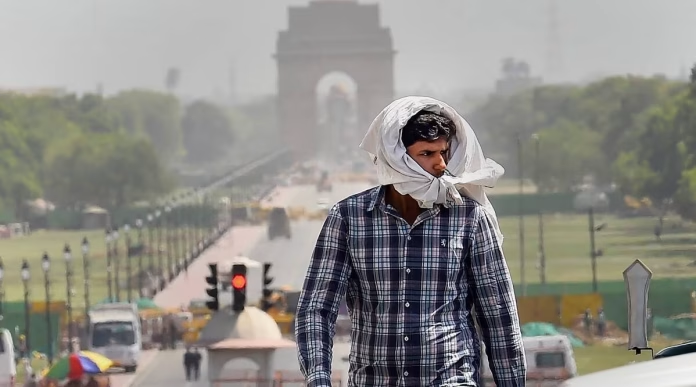With temperatures rising to 34.8°C, a notable 6.4°C above the typical average for this time of year, Delhi had the warmest day on March 11, 2025. Confirming the new temperature record, the India Meteorological Department (IMD) exceeded the previous peak of 32.8°C established just a few days earlier. Delhiites also suffered from declining air quality as the city’s Air Quality Index (AQI) dropped into the “poor” range as scorching temperatures kept rising. The harsh weather is causing health issues like heatstroke and increasing strain on the city’s infrastructure.
In This Article:
Temperatures Climb Above Average
From the start of March, Delhi’s temperatures have risen; March 11 reached the top at 34.8°C. The city’s lowest temperature was noted as 15.7°C; the varying humidity levels contributed to the misery, bouncing between 35% and 87%. A few days earlier, on March 9, the previous maximum temperature—32.8°C—had been recorded; however, March 11’s report raised the mercury far higher. In some remote areas, like Pitampura in West Delhi, temperatures reached a sweltering 35.3°C, which would have severely taxed those living there through the great heat.
The IMD links the very high temperatures to dry winds from Rajasthan, which have helped to raise the mercury. Although a western disturbance approaching Delhi promises some respite in the following days, analysts believe the mercury will be above average for the next several days.
Air Quality Declines as Temperatures Rise
As Delhi’s AQI dropped into the “poor” category, the severe temperatures have been accompanied by worsening air quality. The Central Pollution Control Board (CPCB) said on the morning of March 12 that the AQI was 249, a rise from 219 seen the day before. Particularly for those with respiratory problems, the increasing pollution levels in tandem with the heat raise health issues.
To stop further degradation in reaction to the deteriorating air quality, the Commission for Air Quality Management (CAQM) turned on Stage I of the Graded Reaction Action Plan (GRAP). Over the previous week, the city’s air quality has varied from moderate to bad; experts anticipate that with the higher temperatures, the AQI may stay in the poor category for a few more days.
How Public Health and Infrastructure Will Be Affected by Increasing Temperatures
Apart from making one miserable, the extreme heat threatens public health. Delhi’s hospitals are seeing an increase in heatstroke cases, especially among vulnerable groups like young children and the elderly. The city’s electrical system has also been under great strain from the extreme heat as air conditioners are working at maximum capacity, raising concerns about possible shortages.
Moreover, the rising temperatures match growing incidents connected to fires. With around 200 daily occurrences, Delhi’s fire service has recorded unprecedented calls. Together with continuous campaigning and demonstrations in the run-up to national elections, these heat-related difficulties are trying the city’s fortitude.
Urge you to be ready!
Delhi’s citizens must be ready for additional intense heat in the following days as the city witnesses the warmest day of the year. The authorities are on great alert as the forecast calls for higher temperatures. Extreme heat combined with worsening air quality emphasizes the requirement for improved readiness. The IMD’s forecast of strong surface breezes, which could provide some respite, is not anticipated to be sufficient to offset the difficulties presented by extended heat waves. Delhiites are encouraged to protect against the health hazards of excessive heat, keep hydrated, and avoid needless outside activity. The situation demands immediate attention to environmental and public health policies to lessen the effects of the continuous heat wave as the city fights these increasing temperatures.
By – Bhawna




